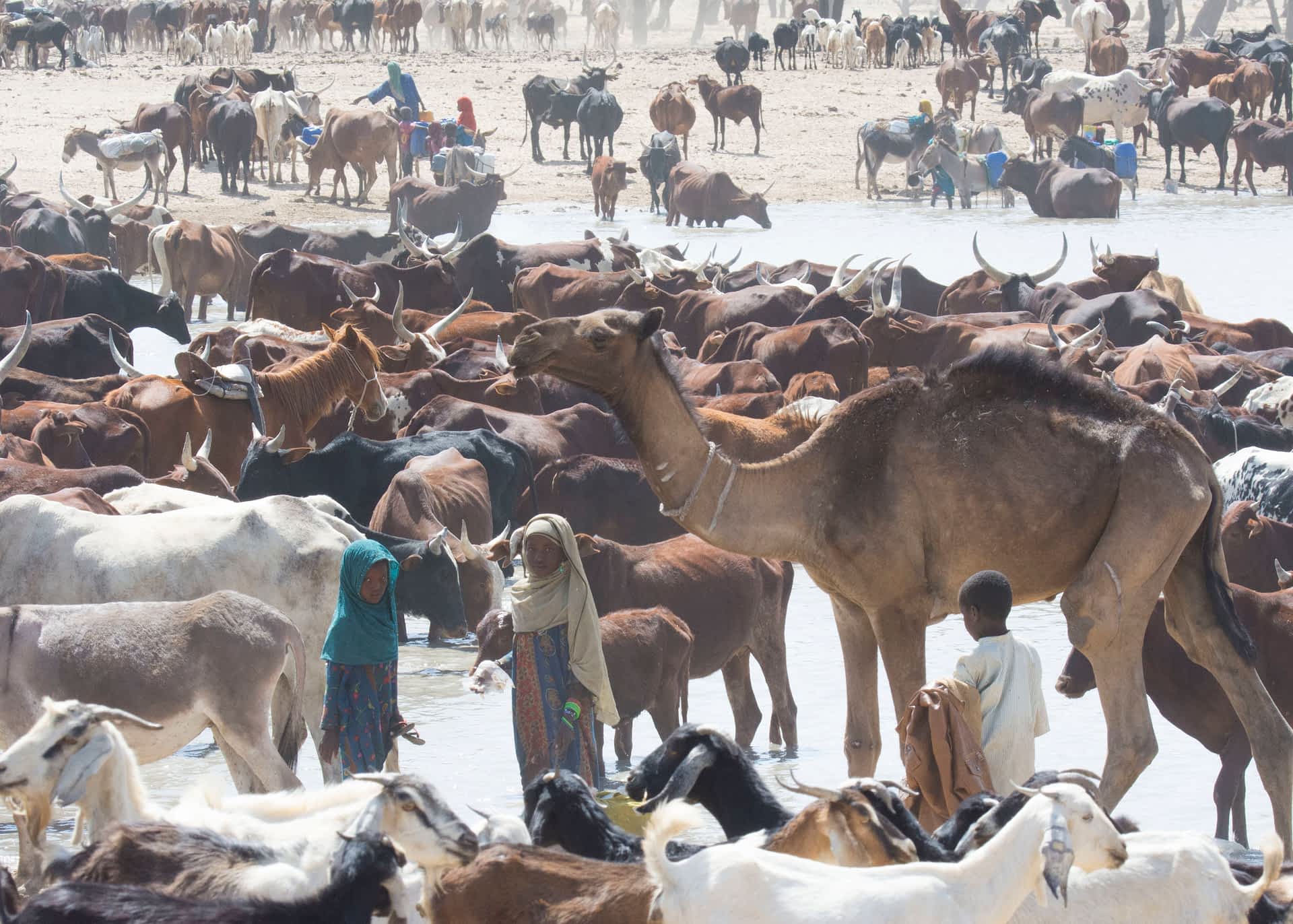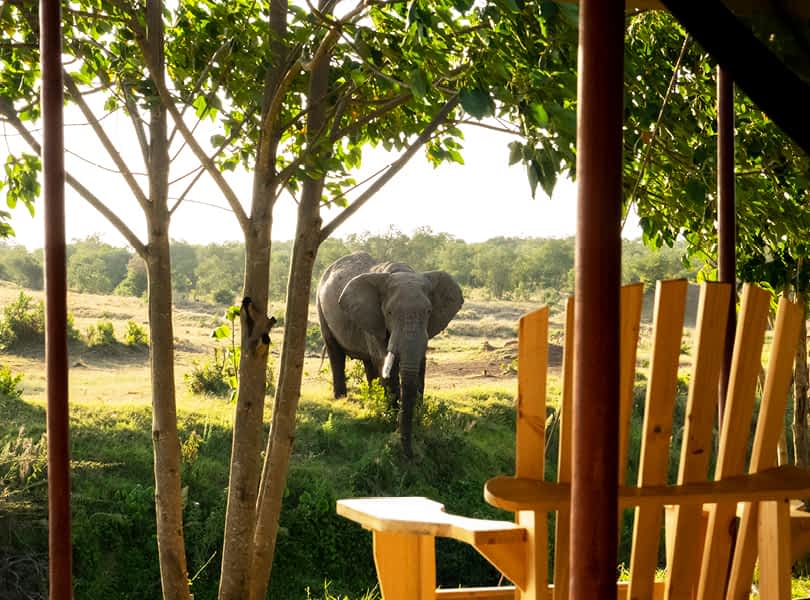The wildlife of Chad has faced many obstacles over the last few decades due to poaching and the destruction of habitats. In Zakouma National Park alone, approximately 95% of the elephant population was decimated by poachers who ransacked the park between 2002 and 2010. The poachers made away with the ivory from 4,000 elephants during this 8-year period.
Fortunately, thanks to efforts by the Chadian government, wildlife has begun to rebound. In 2010, the government and African Parks signed a long-term agreement to restore and manage Zakouma National Park before it was too late. Now the wildlife is making a comeback. Elephant populations are on the rise for the first time in decades. These conservation efforts have also positively impacted the roan antelope, Lelwel’s hartebeest, and Kordofan giraffe (Zakouma is home to half of the global population). The park’s buffalo population has also exceeded 12,000 (which was reduced to about 220 animals in 1986).
The transformation of Zakouma National Park has been nothing short of spectacular. I wanted to take the opportunity to visit this remote park and see this for myself.
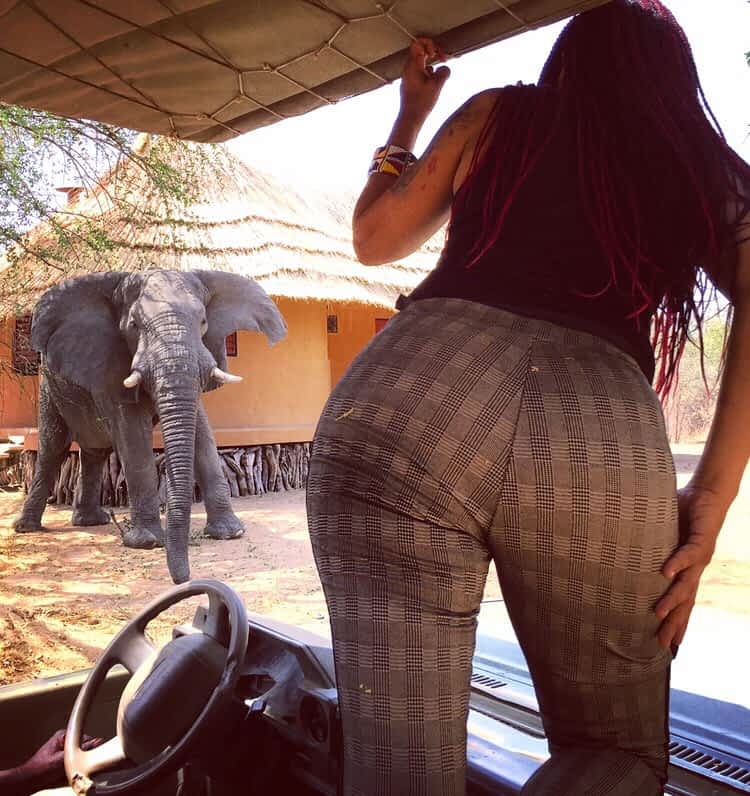
Preparing for My Trip to Chad
I spent a lot of time preparing for my trip to Chad. Despite being the 20th largest country in the world, it is one of the least visited. On an average year, only 50,000 Americans visit the central African nation for tourism (this dipped down to only 10,000 during the COVID-19 pandemic). This is partially due to its remote location and Level 3 travel advisory issued by the US government. Their recommendations are to reconsider travel due to crime, terrorism, civil unrest, and kidnapping. I took the time to learn about what precautions I should take to keep myself safe.
I also focused heavily on language. English is not widely spoken since the official language is French, followed by Arabic. I did my best to learn as much French as possible before my trip, but once I landed in Chad, it all went out the window.
Arriving in the Capital City of N’Djamena, Chad
I arrived in N’Djamena, the capital of Chad in the early evening. The flight arrived about fifty minutes ahead of schedule. The immigration process was swift, but there was a health check to ensure I had a yellow fever vaccination. Since I arrived earlier than stated, there was no one to meet me at arrivals. An airport employee was nice enough to let me use their phone to contact Tarif from African Parks.
Shortly after, Tarif came to pick me up and drove me to La Résidence Hotel where I would be staying (which was only about a five-minute walk from the airport). Upon entering the hotel, you have to pass through two security gates. They also carefully check under the car using a long pole with a mirror at the end, searching for bombs.
Once at the hotel, Hassane of Eyte’ Voyages came to meet me and go over some details of our journey to Zakouma. Hassane would be my driver for the 14-hour road trip which would be divided into two days. (After arriving at Zakouma, I learned that some guests made the trip in just 11 hours).

The next morning, after a good night’s sleep and a delicious breakfast, Hassane met me at the hotel and we were on our way. It didn’t take long to get out of the city. Once we were out, there weren’t many other vehicles on the road. Some stretches of the road were smooth while others were bumpy causing Hassane to swerve around the potholes. On a few occasions, I bounced in my seat so much that I thought my head would hit the roof of the vehicle. The trip was also quite dusty. For these reasons, this road trip may not be for everyone. However, I was looking forward to the adventure
Experiencing the Culture Along the Road to Zakouma
The scenery along the way was stunning and diverse. It gave me the opportunity to get insights into a culture and lifestyle that is far removed from our own. I saw villages and towns scattered along the roads and was able to witness how people lived with no electricity, collecting long grass and water from designated pumps, herding their cattle, and using animals as their mode of transportation.
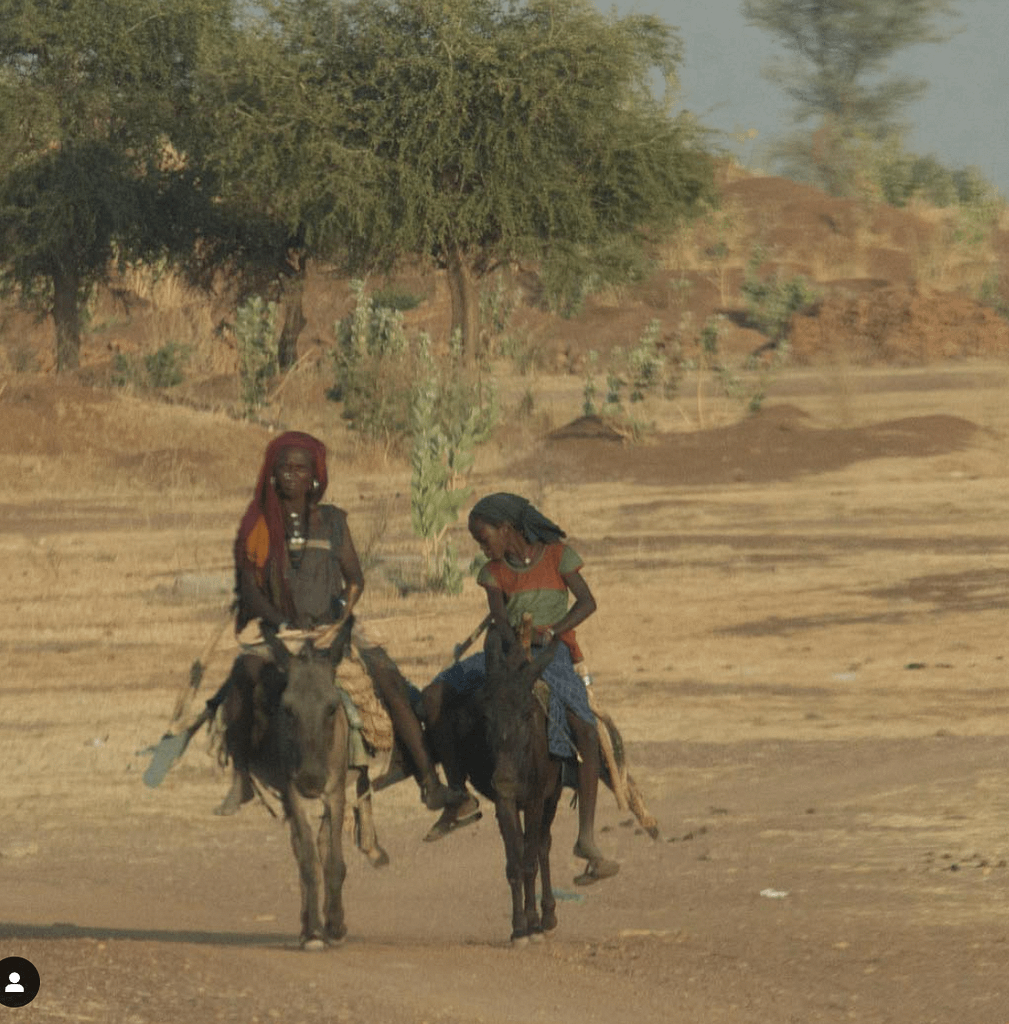
Outside of the villages, I was intrigued by the black Arab nomads who migrate between the northern and southern parts of Chad following the rainfall. The campsites were easy to distinguish as they lived in non-permanent structures unlike what we saw in the villages.
Hassane explained that their diet consisted of millet, sugar, and milk. I also learned that there were several types of nomads. For instance, the ones that lived around the city of N’Djamena sold their camel milk for a living while the nomads in remote areas were self-sufficient.
After several hours of driving, we had our first flat tire and had to pull over. It couldn’t have been a better place to stop. We found ourselves near a large waterhole that was being used by hundreds of nomads and their livestock which included cows, donkeys, camels, and horses. It was a surreal experience that I’ll never forget.
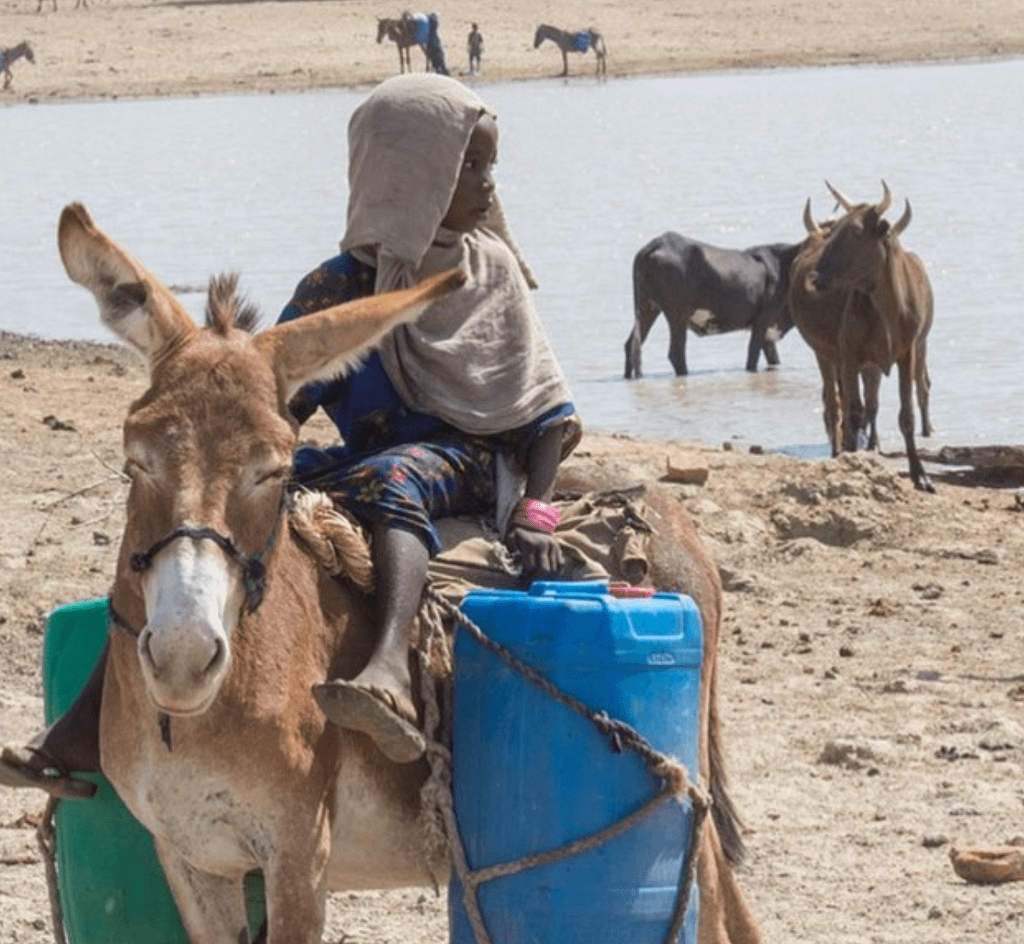
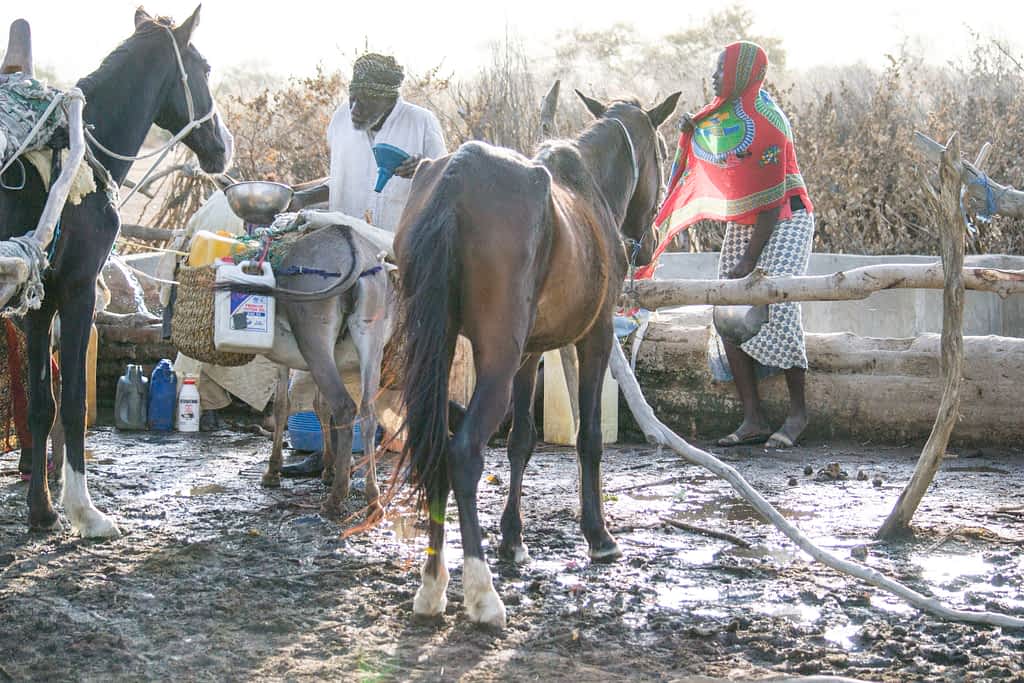
Once the flat tire was fixed, we continued until it was time to stop for a roadside lunch under a tree. I was vegetarian at the time (now I’m vegan), so all the food Hassane brought for us was vegetarian. Hassane was not only an excellent driver but he was skilled at preparing good, simple food.
Overnight Stop in Mongo, Chad
We continued on our journey until we reached the town of Mongo, located about 252 miles (406 kilometers) east of N’Djamena. With a population of approximately 40,000 people, Mongo is considerably larger than the rest of the towns and villages that we passed through earlier in the day.
We set up camp on the grounds of a gated, Christian establishment. Sleeping arrangements were a thin tent with some netting sections so you could see out. I brought my own sleeping bag along on the trip. The accommodations were basic, but I was comfortable. Once the sun had set, Hassane got back to work cooking dinner in our backyard under the dark sky.
The bathroom situation was minimal with a toilet with no flush. In order to flush, you had to fill a bucket of water and dump it down the toilet. There was a simple basin for handwashing. I was perfectly fine with roughing it since I knew I was camping.
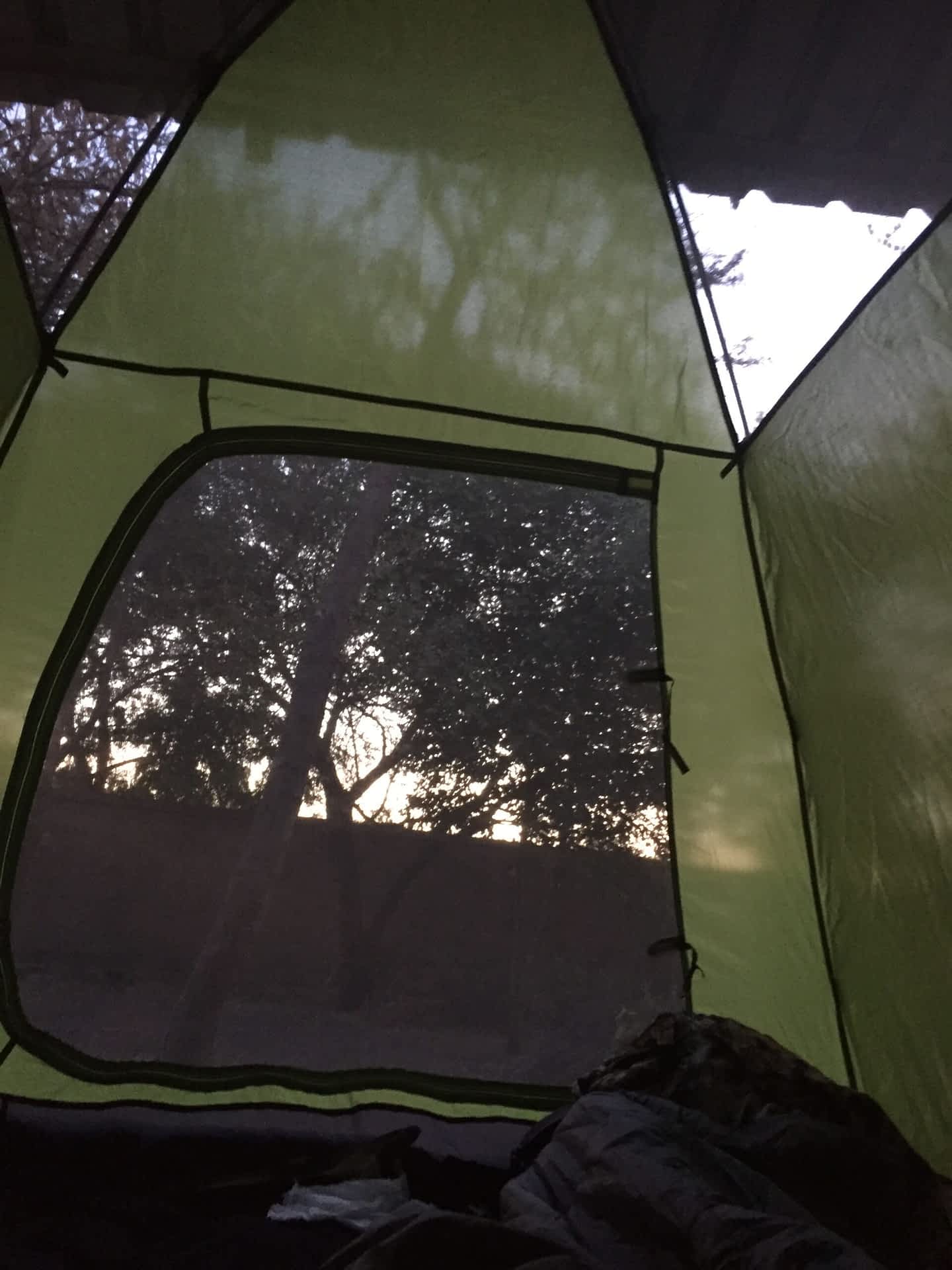
Driving the Rest of the Way to Zakouma National Park
The next morning after breakfast, we left Mongo for Zakouma. The further we traveled, the more remote it became. Since 55% of the Chadian population is Muslim, all of the small towns and villages along the picturesque route had a mosque.

It was a common sight to see people praying throughout the day. Arabic was mostly spoken throughout the villages and many people were not used to seeing foreigners. The children were especially intrigued by my presence.
It wasn’t long before we got another flat tire on a remote road. Fortunately, a passing truck with a group of men stopped to help.
We continued on until we reached a village where Hassane could get his spare tire repaired. Most villages that we passed through seemed to have at least one mechanic. A crowd of kids would often gather to eagerly watch and learn as the mechanic did his work.
This was our final stop before arriving at Zakouma.
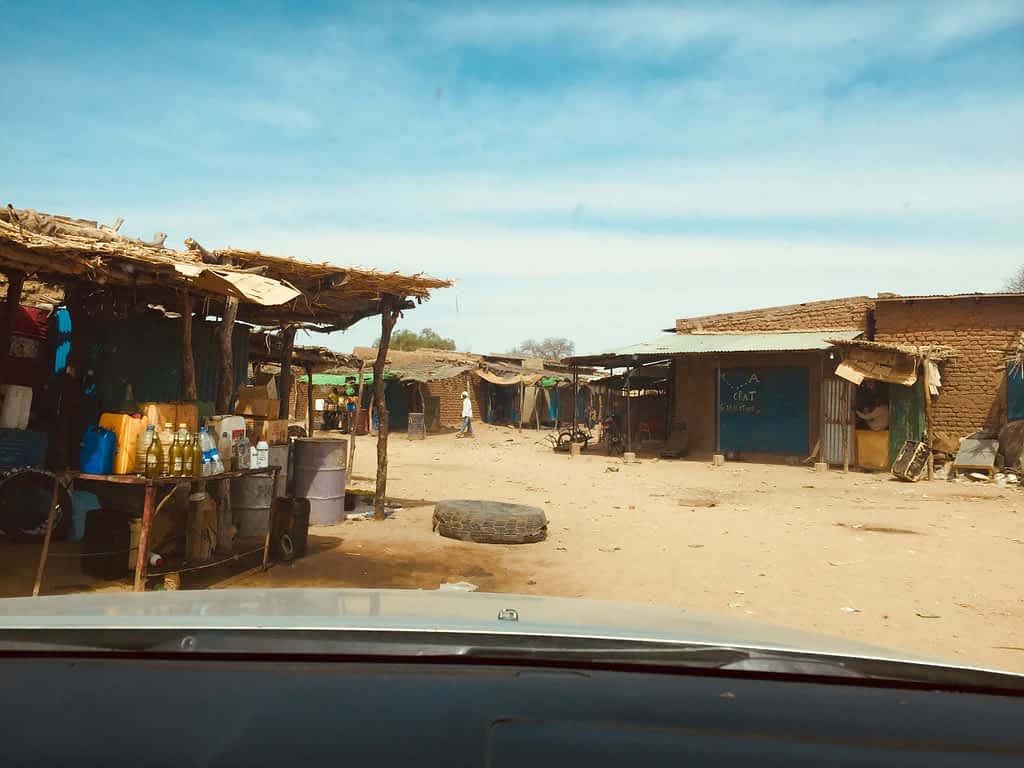
Hassane took me to a hut which he tells me is a restaurant to make me lunch. Hygiene, especially with food preparation is critical to me when traveling. Hassane was sure to take extra precautions when preparing food.
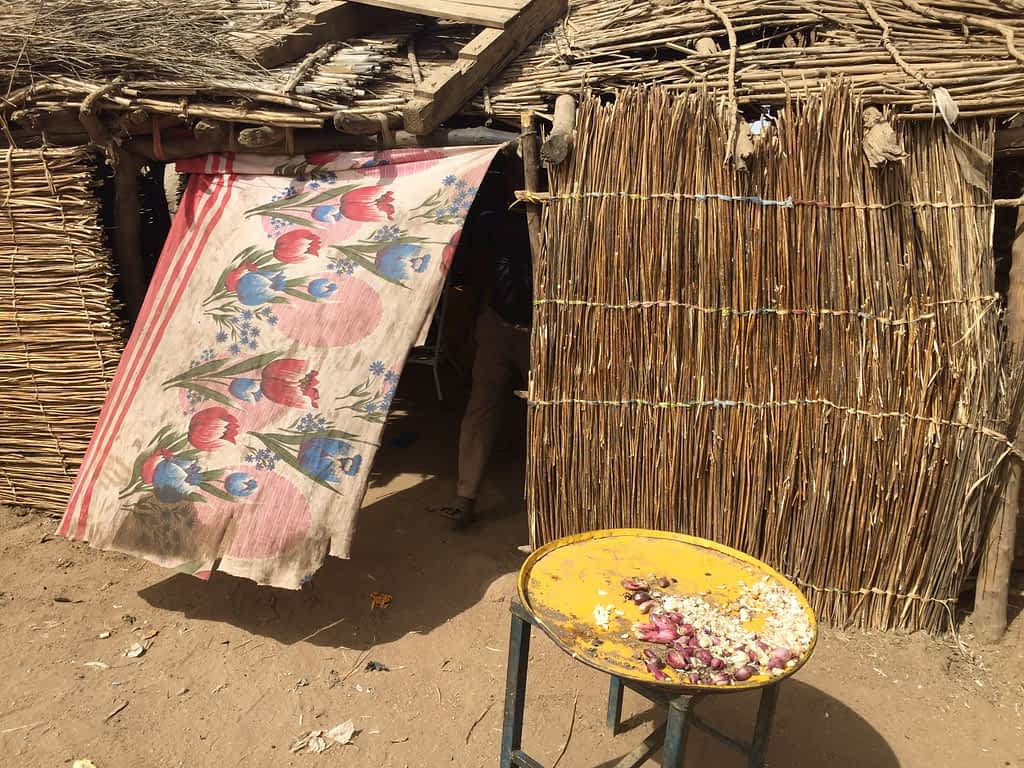

Arriving at Zakouma National Park
After the long journey, we finally spotted a sign for Zakouma National Park, 100 kilometers away. Once we arrived at the park boundary, I was surprised to find the entrance unmanned. There was no one there to greet us or check us in.
The roads through the park have no signs and many of the roads didn’t even look like roads. Fortunately, Hassane knew how to navigate the park without the use of GPS or a map. Hassane headed straight toward Tinga Camp which would be my accommodations for the next 9 days.
The first sign of wildlife in the park was baboons, followed by birds called guinea fowl. Along the way, the guinea fowls would dart across the road in front of our moving vehicle before getting the urge to fly or run out of the way.
Staying in Tinga Camp
We arrived at Tinga Camp, situated near the center of the park. We were welcomed by the camp manager, Max. Since I had missed the afternoon game drive, Max organized a special night drive for me and another guest after dinner. On the night drive, there were multiple sightings of genet, civet, and serval. This was my first time seeing serval in the wild, so I was delighted to see so many.

Tinga Camp had no fences so wildlife could roam freely through the camp. The next morning, I woke up to three buffalos outside my room. Since they are widely regarded among the most dangerous animals on the African continent, I stood on the steps of my room for about 10 minutes contemplating whether I should leave and go to the dining area. Eventually, I thought it would be safe enough for me to head over to the dining area.
Breakfast every morning was fruit, bread, cereal, tea, coffee, and juice. Lunch and dinner were simple, three-course meals. The food was pretty good considering our remote location. Service was swift, friendly, and well-organized. The camps dining and lounge area is set on the banks of the Tinga River (which has dried up) with wonderful views of the surrounding bush where wildlife can be spotted.
The camp’s managers, Max and Clair, made an effort to talk to all of their guests, especially Max who was usually there first thing in the morning when I arrived for breakfast and the last to leave at night.
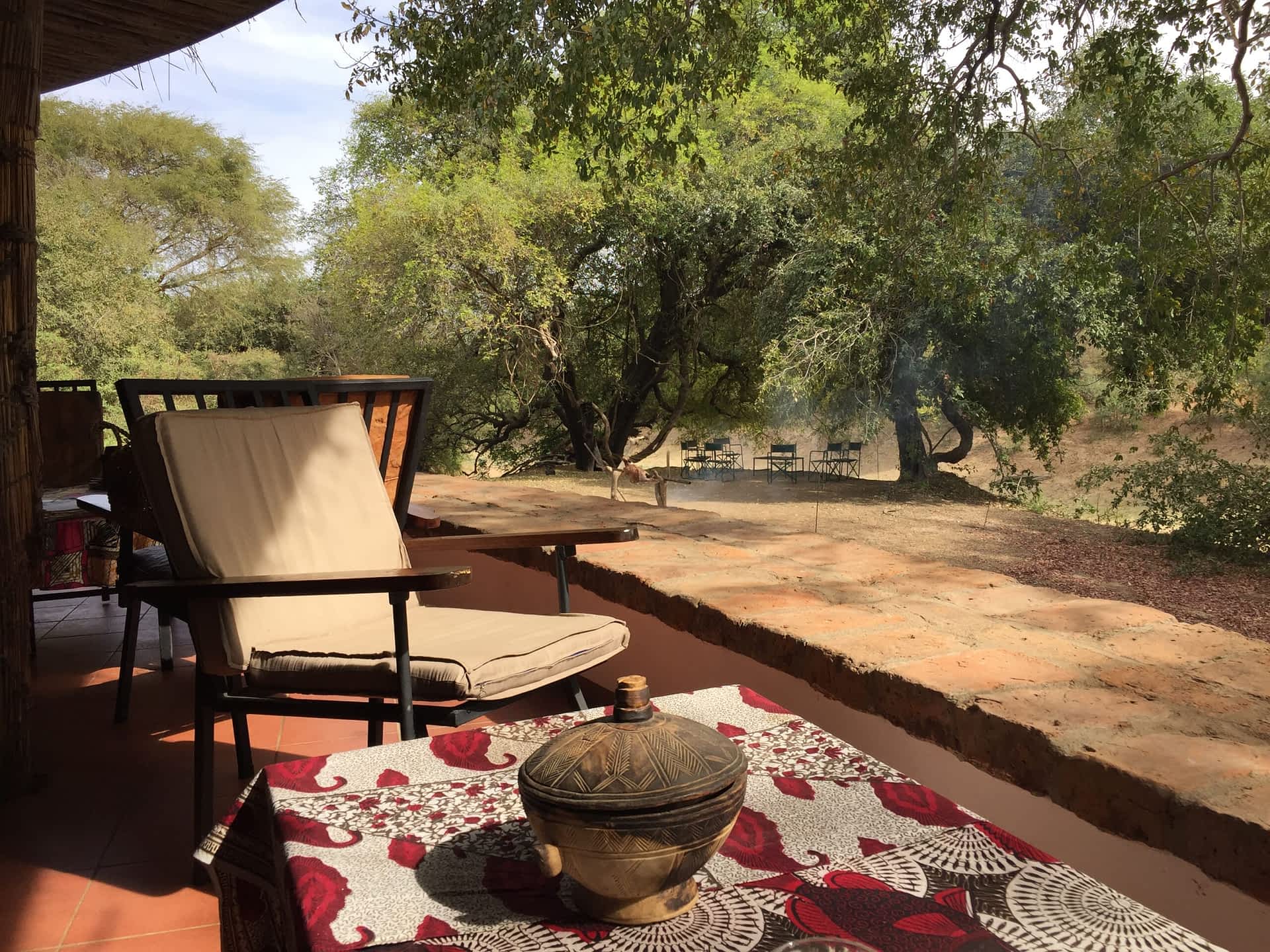
Spotting Wildlife On Zakouma Wildlife Drives
Throughout my stay, I went on several game drives. Since the park has low visitation, it was extremely rare to see another vehicle. I would share my drives with other guests who were also staying at Tinga Camp. On one of the afternoon drives, I was the only guest, so my guide wanted to take me to find the large herds of elephants, numbering in the hundreds. To reach the large herds, we had to travel quite some distance from the camp.
Along the way, we passed large areas which had brushfires or were smoldering from the fires. Once past the bushfire, we spotted a large waterhole with an abundance of wildlife. My guide was laser-focused on finding the elephants. Once he spotted them, it was not easy to get close.

The herd was very different from other herds that I have observed in Africa as they were extremely skittish. It’s quite bizarre to see the largest land animal in the world run in fear. Unfortunately, this was understandable. It wasn’t long ago that they were being hunted mercilessly by poachers.

Morning game drives turned out to be the best time to observe birds. In the mornings, we saw massive flocks of various species fill the sky as they headed toward the nearby watering holes.
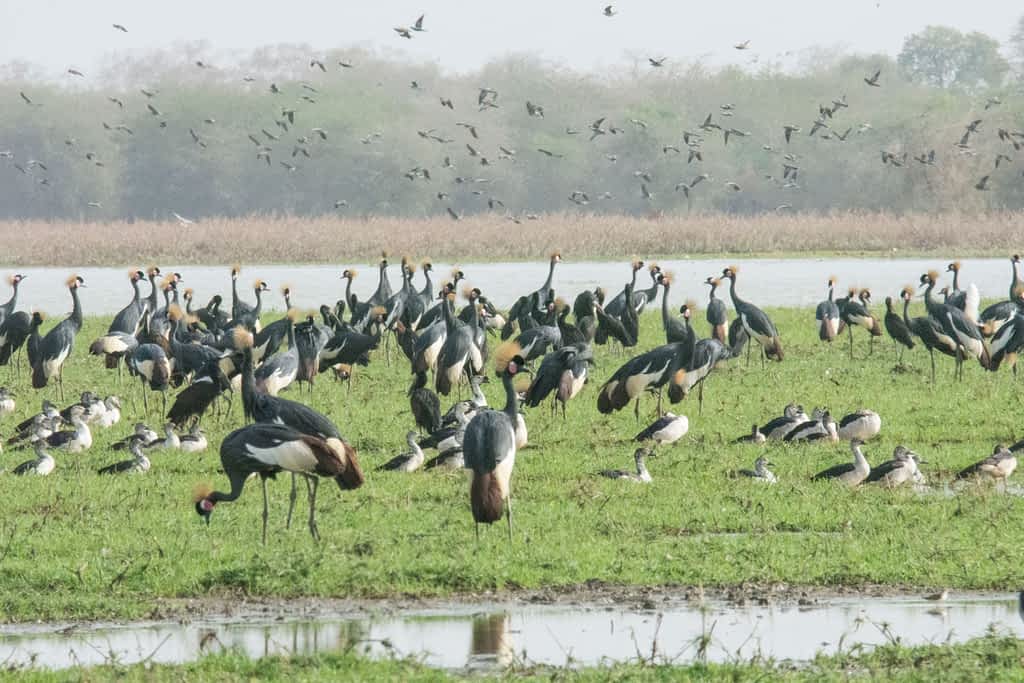
On one drive with a group of guests, we again went to find the large herds of elephants. After hours of driving, they were eventually spotted. The herd, which easily numbered in the hundreds, sensed our presence and started to run away. The herd was followed by a large flock of birds called egrets. Egrets ride on the elephants’ backs feeding on parasites and insects that are stirred up from the soil and grass as elephants walk. Egrets also help to protect the herd by sounding the alarm if predators are approaching. This gives elephants a chance to guard their babies against a possible attack. There were quite a few calves in the herd, a great sign that the population is making a comeback. In all my years going on safaris, I have never seen such a large herd of elephants.

Heading Back to N’Djamena
Hassane returned to Tinga Camp the night before my departure day. After breakfast, we left for N’Djamena. This time, Hassane brought a different vehicle that was better suited for the bumpy roads. It was a common sight to see people on the side of the road fixing flat tires on their motorbikes, cars, and large trucks. I also saw quite a few that had been totaled from accidents and left to the side of the road, perhaps a reminder to other people to drive safely.

After a long drive, Hassane said we would stop along the roadside at 5:30 PM to set up camp for the night. I had heard many stories about carjackers waiting on the roads, so my first thought was “what about the carjackers?”. I decided to just put my trust in Hassane. We pulled off the road and drove into the bush. Surrounded by nature, we set up camp.
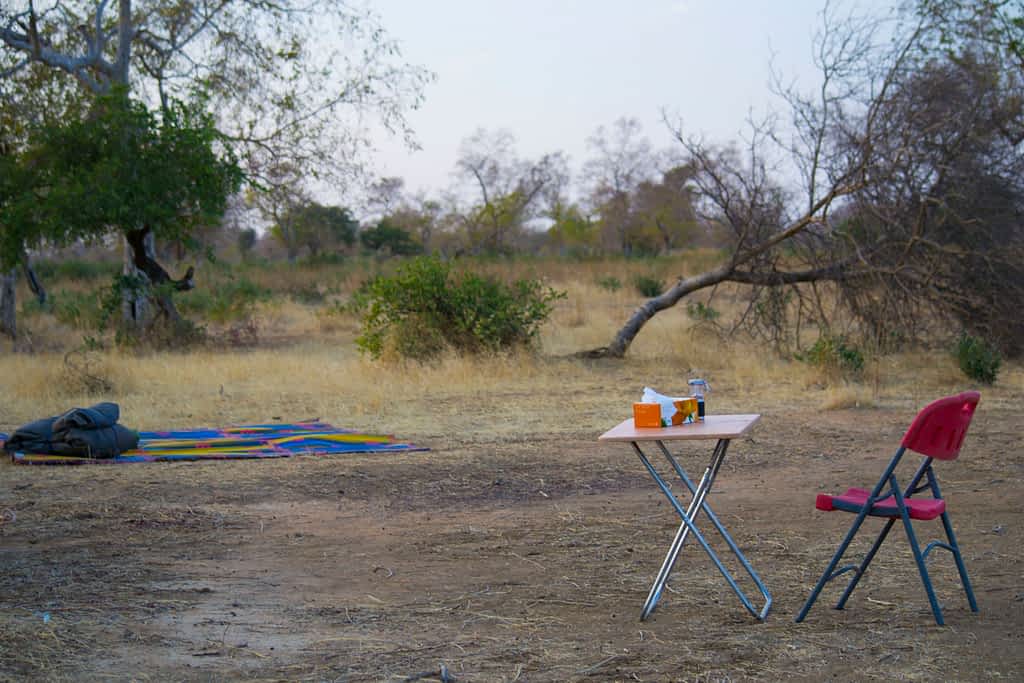
In the evening we could hear a villager from a nearby village giving a call to pray.
While camping in the bush, we only saw a few random people passing through on horse or by foot from neighboring villages. They seemed surprised to see us camped out. The evening was spent using a couple of camping lamps to give us light while Hassane cooked a nice meal. We spent the rest of the night chatting and looking up at the sky filled with millions of stars, something you don’t see living in a city.
During the evening, we could hear a call to prayer from a nearby village. And, although we were far from any wildlife reserve, I could hear the loud vocalization made by hyenas from my tent after going to bed. From the sound, they came quite close to our camp. Later in the morning, a few horses wandered through from a nearby village.
After breakfast, we commenced our road trip. At one point, Hassane pointed to my side of the window and says, “look a caravan!”. It was a magnificent sight. A large group of nomads was migrating in a long line, with their large herds of cattle, donkeys, goats, and all their belongings.


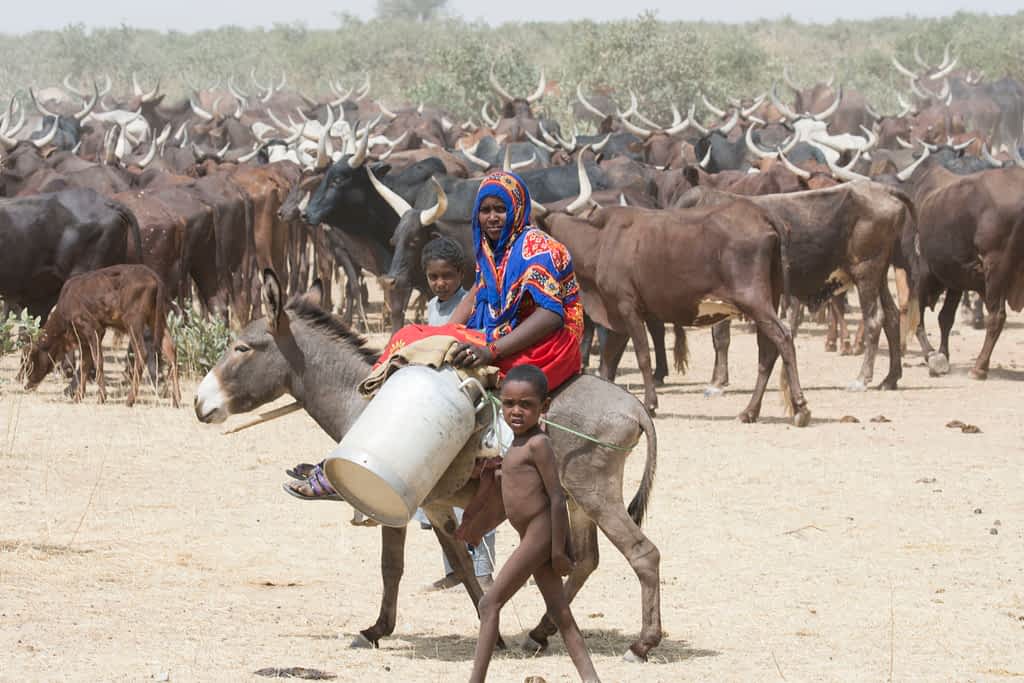

I was able to talk with Leon Lamprecht, the current park manager, and ranger Zakaria Hassane about their experiences. To read more

